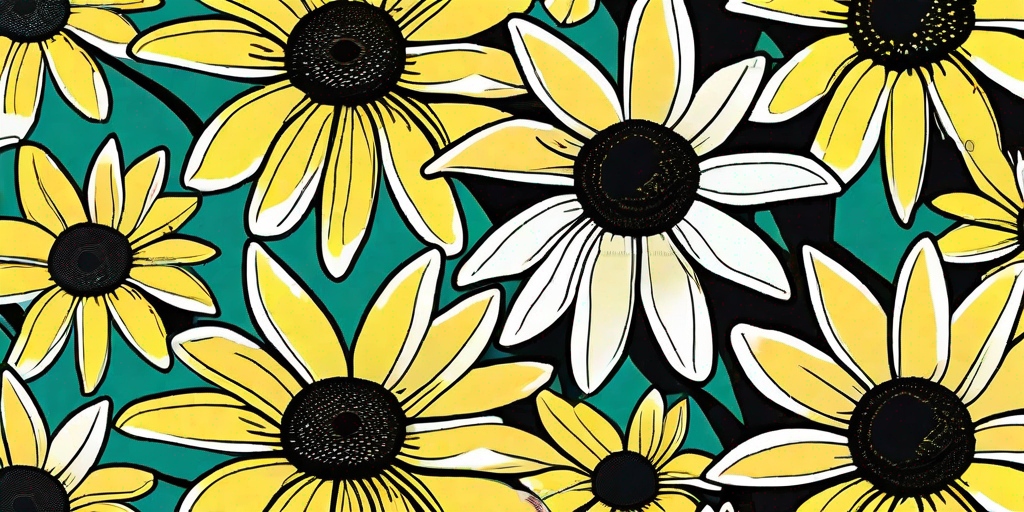
If you're looking for a way to add a splash of color and a dash of personality to your garden, look no further than the bold and beautiful Deadhead Black Eyed Susan. This vibrant, hardy perennial is not only a feast for the eyes but also a breeze to grow and maintain. So, let's dive into the world of this cheeky little flower and learn how to rock your garden with it.
Understanding the Deadhead Black Eyed Susan
First things first, let's get to know our star. The Deadhead Black Eyed Susan, scientifically known as Rudbeckia hirta, is a member of the sunflower family. It's native to North America and is known for its bright yellow petals and dark brown, almost black center - hence the name. But don't let the name fool you. This flower is anything but gloomy. It's a symbol of encouragement and motivation, making it a perfect addition to any garden.
One of the most fascinating aspects of the Deadhead Black Eyed Susan is its hardiness. It's a tough little flower that can withstand harsh conditions and still bloom beautifully. It's drought-tolerant, deer-resistant, and can thrive in various soil types. Talk about a low-maintenance beauty!
The Life Cycle of a Deadhead Black Eyed Susan
Understanding the life cycle of the Deadhead Black Eyed Susan is crucial for its successful cultivation. This perennial plant typically blooms from June to October, adding a pop of color to your garden when most other plants are starting to fade. The flowers attract a variety of pollinators, including bees and butterflies, adding to the overall vibrancy of your garden.
Once the blooming season is over, the plant goes into a dormant state during the winter months. But fear not, it will spring back to life as the weather warms up, ready to dazzle you with its beauty once again.
How to Grow and Care for Deadhead Black Eyed Susan
Now that we've gotten to know the Deadhead Black Eyed Susan, let's get down to the nitty-gritty of growing and caring for this plant. As mentioned earlier, this flower is a low-maintenance beauty, making it perfect for both gardening novices and seasoned green thumbs.
Firstly, you'll need to choose a sunny spot in your garden, as these flowers love the sun. They can tolerate partial shade, but for the best blooms, full sun is the way to go. As for the soil, well-drained soil is ideal. However, these tough little flowers can adapt to various soil types, including clay, loamy, and sandy soil.
Planting the Seeds
When it comes to planting the seeds, you have two options. You can either sow the seeds directly into your garden or start them indoors. If you choose the latter, start the seeds 6-8 weeks before the last expected frost. Once the seedlings are strong enough, you can transplant them into your garden.
Whether you're sowing the seeds directly into the garden or transplanting seedlings, make sure to space them about 18-24 inches apart. This will give them enough room to grow and flourish.
Watering and Fertilizing
Watering and fertilizing are key to keeping your Deadhead Black Eyed Susans happy and healthy. While these flowers are drought-tolerant, they do appreciate regular watering, especially during dry spells. As for fertilizing, a light application of a balanced fertilizer in the spring should suffice.
Remember, overwatering and over-fertilizing can do more harm than good. So, keep it light and your Black Eyed Susans will thank you with a spectacular display of blooms.
Common Problems and Solutions
While the Deadhead Black Eyed Susan is a hardy plant, it's not completely immune to problems. Here are a few common issues you might encounter and how to tackle them.
Powdery Mildew
Powdery mildew is a common fungal disease that can affect your Black Eyed Susans. It presents as a white, powdery substance on the leaves. To prevent this, ensure good air circulation around your plants and avoid overhead watering. If your plants are already affected, you can use a fungicide to treat them.
Slugs and Snails
Slugs and snails can also pose a threat to your Black Eyed Susans. These pests are particularly fond of young plants. To protect your plants, you can use slug and snail bait or traps.
FAQs
Are Deadhead Black Eyed Susans Perennials?
Yes, Deadhead Black Eyed Susans are perennials. They will come back year after year to add color and vibrancy to your garden.
Do Deadhead Black Eyed Susans Attract Bees?
Yes, the bright yellow flowers of the Deadhead Black Eyed Susan attract a variety of pollinators, including bees and butterflies.
How Often Should I Water My Deadhead Black Eyed Susans?
While these flowers are drought-tolerant, they do appreciate regular watering, especially during dry spells. However, avoid overwatering as it can lead to root rot.
So there you have it, folks. With a little bit of care and a whole lot of love, you can rock your garden with the bold and beautiful Deadhead Black Eyed Susan. Happy gardening!















